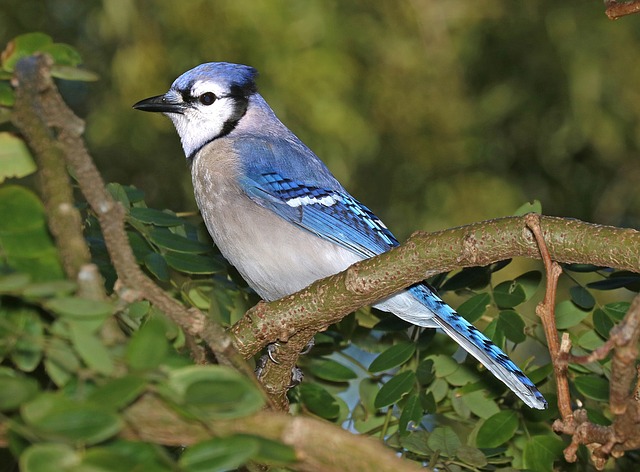A Blue Jay on a perch in Washington Park on an early autumn afternoon sees a Monarch Butterfly flutter by. Even though it’s hungry it decides to stay put. Why? Not out of mercy, but because a year ago it tried to eat a monarch and got sick. Monarchs inherit toxic chemicals from the milkweed sap they ingest as larva. This Blue Jay then learned not to eat any insect with bright orange and black patterns. Can I get an amen, Viceroy butterflies?
Suddenly the Blue Jay sees movement and in a flash abandons its perch seconds before a hungry female Cooper’s Hawk swoops down in hopes of its own meal.

The adrenaline-filled Blue Jay decides to recombobulate and grab some acorns. It stuffs a few in its gular sac (throat pouch), grabs one more for its bill and then flies away to a patch of trees with soft soil where it proceeds to bury the acorns one by one. Although seemingly doing this to help the UEC Land Stewardship team plant native trees, it is actually saving the acorns to eat over the winter in soil that will act as a freezer. And while possessing high intelligence, memory and learning, the Blue Jay still will not remember where it caches all of the acorns, thus the Oak tree benefits by having one or more of its seeds planted at just the right depth in just the right soil.
Within a 10-minute time span the Blue Jay demonstrated learning from the past, living in the present and preparing for the future.
In my job I try to keep one foot strongly in the present, but I almost always have the other foot in the future. Sometimes it’s pretty straightforward like thinking about which programs the research team will be doing four months from now. Other times it surfaces when I’m walking outside with community members. Many things we observe are strongly linked to seasonality and often to the future.
In late June, when we can finally take our weekly birdwalks without parkas, I like to ruffle the feathers of fellow community scientists by mentioning that fall migration is starting (for arctic shorebirds that have a long way to go) and birds are preparing for the winter, which is JUST around the corner. I do try to balance that in September when we start seeing male mallards again. Where had they gone? Turns out nowhere, they were just in eclipse plumage, which makes them look like females. So then in September I can say, “See that mallard? It just got into breeding plumage because its courtship starts soon and that means spring is JUST around the corner.”
The end of fall is a great time to see that nature (and realistic people) really know winter is just around the corner. Our houseplants are in from the porch, storm windows are up, hot chocolate’s coming back out at the three Urban Ecology Center branches (yay!), owls are hooting, trees are losing leaves and the hardy little junco, the true snowbird, is back in its toasty winter home in Milwaukee to keep us company during the cold dark days ahead.





